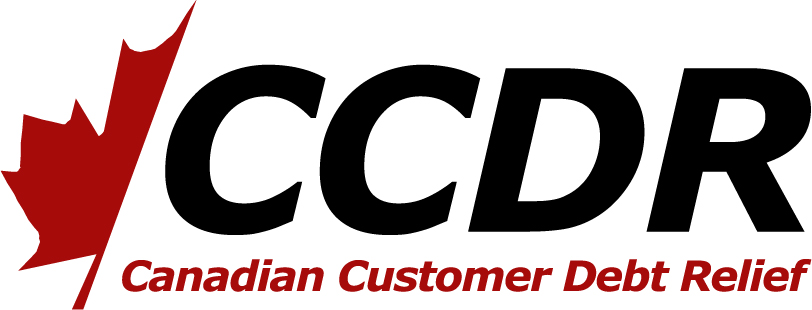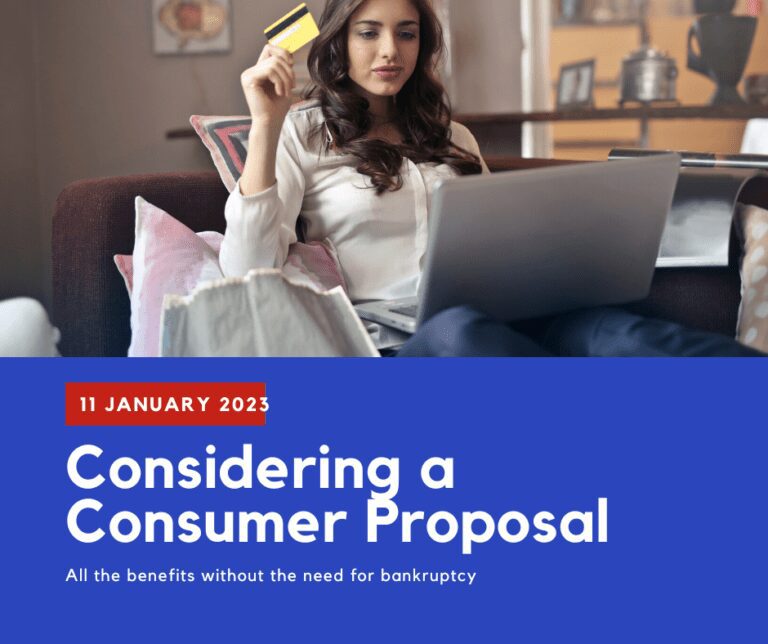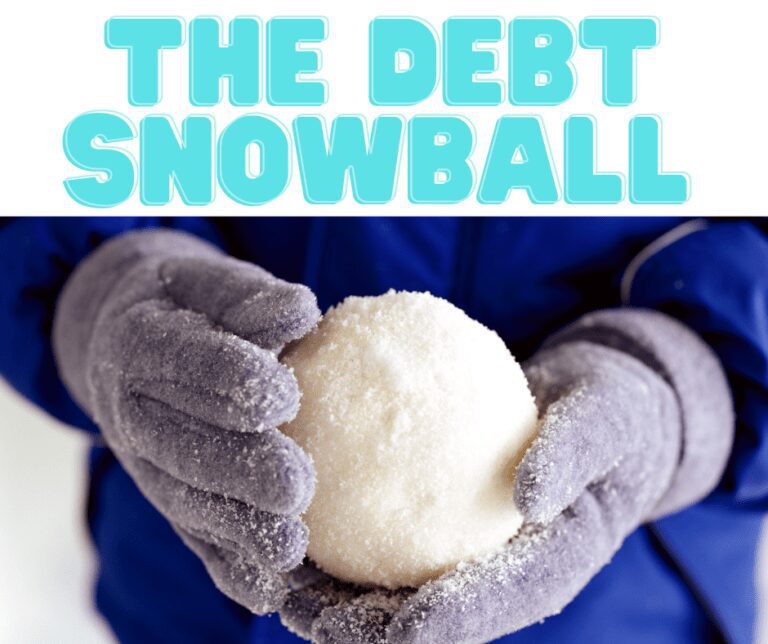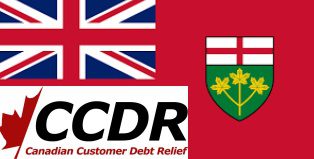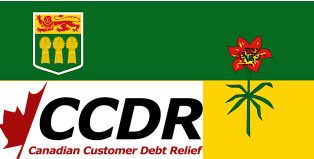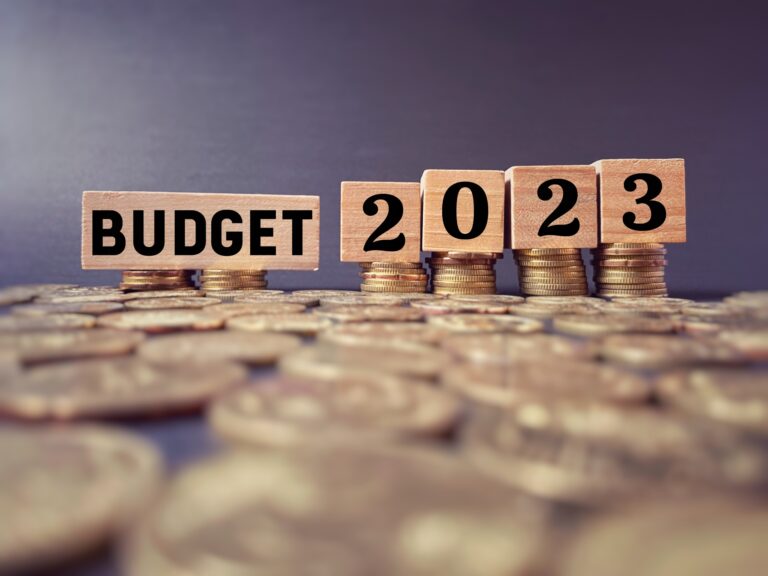Considering a Consumer Proposal
A consumer proposal is a legal process that allows individuals who are struggling with debt to propose a repayment plan to their creditors. It is an alternative to bankruptcy and can be a useful tool for those who want to avoid the negative consequences of bankruptcy, such as losing assets or damaging their credit score.
When considering a consumer proposal, it’s important to understand that it is a binding agreement between the individual and their creditors. Under the proposal, the individual agrees to repay a portion of their debts over a period of time, typically up to five years. In exchange, the creditors agree to waive the remaining portion of the debt.
One of the main benefits of a consumer proposal is that it can significantly reduce the amount of debt an individual owes. In most cases, the individual will only have to repay a portion of their debts, which can make it more manageable to repay. Additionally, interest charges on the debt are usually stopped once the proposal is accepted, which can help the individual save money in the long run.
Another benefit of a consumer proposal is that it can protect assets. Unlike bankruptcy, a consumer proposal allows individuals to keep their assets, such as their home or car, while they repay their debts. Additionally, a consumer proposal will not have as much of an impact on an individual’s credit score as a bankruptcy would.
It’s important to note that a consumer proposal requires the services of a licensed insolvency trustee (LIT) who will review the individual’s financial situation, assets and liabilities and help to prepare the proposal to the creditors. The LIT will also act as a mediator between the individual and their creditors during the process.
Before considering a consumer proposal, it’s important to fully understand the process and the consequences. It’s crucial to work with a reputable LIT who will explain all the details of the process and help the individual to make an informed decision. Additionally, it is important to understand that a consumer proposal will be reflected on an individual’s credit score for up to three years after the completion of the proposal.
Overall, a consumer proposal can be a useful tool for individuals who are struggling with debt. It can significantly reduce the amount of debt an individual owes, protect assets and not have as much of an impact on credit score as a bankruptcy. However, it is important to fully understand the process and work with a reputable LIT to make an informed decision.
The Debt Snowball Method
The debt snowball method is a popular strategy for paying off credit card debt and other forms of consumer debt. The basic idea behind the debt snowball method is to pay off your debts in order of smallest to largest, regardless of the interest rate. The theory is that by paying off the smallest debts first, you will be able to quickly see progress and gain momentum, which will help you stay motivated to continue paying off your debts.
Here is how you can accomplish the debt snowball method:
- List all of your debts: Make a list of all of your debts, including the creditor, the balance, and the minimum payment.
- Order the debts by balance: Arrange your debts by balance, starting with the smallest and working your way up to the largest.
- Make minimum payments: Make the minimum payment on all of your debts except for the one with the smallest balance.
- Attack the smallest debt: Apply as much extra money as possible towards the debt with the smallest balance. For example, if the minimum payment is $50 and you can afford to pay $100, apply the extra $50 towards that debt.
- Repeat the process: Once you have paid off the debt with the smallest balance, take the extra money that you were applying to that debt and apply it to the next smallest debt, and so on. As you pay off each debt, you will be freeing up more money to put towards the remaining debts, allowing you to make larger payments and pay them off faster.
- Track your progress: Keep track of your progress as you pay off each debt, and celebrate your wins along the way. This will give you motivation to keep going and stay committed to the process.
An important thing to keep in mind is that the debt snowball method will not necessarily save you the most money in interest charges, because it doesn’t focus on paying the high-interest debt first. However, the psychological benefit of seeing small debts being paid off may help you stay on track, and the small wins will give you motivation to pay off larger debts as well.
It is important to note that if you have any trouble with paying the minimum payments or you see that it will take you a very long time to pay off your debts, you may want to consider reaching out to a debt relief company like ccdr.ca that can help you come up with a personalized plan to repay your debts and potentially even reduce the amount you owe.
Paying off your Credit Card Debt Faster
Paying off your credit card debt can be a daunting task, but with a little planning and effort, it is possible to pay off your balance faster and improve your credit score. Here are a few strategies you can use to pay off your credit card debt more quickly.
- Make more than the minimum payment. The minimum payment is the smallest amount you must pay each month to avoid late fees and penalties. While making the minimum payment will keep you in good standing with your creditor, it will not make a significant dent in your balance. Instead, aim to pay as much as you can above the minimum each month. This will help reduce the amount of interest you pay over time and help you pay off your balance faster.
- Prioritize Lowest Balance credit cards. If you have multiple credit cards, focus on paying off the one with the Lowest balance first. This will not only get rid of that card the fastest but will give you a sense of accomplishments to keep at it. Small wins are motivators. Once you have paid off the first card, carry forward the amount your were paying to the next lowest and so on, until you are debt free.
- Create a budget. To pay off your credit card debt, you need to be able to allocate funds towards the balance each month. Creating a budget will help you to identify areas where you can cut expenses and redirect the savings towards your credit card debt. Be sure to include your credit card payments as a fixed expense in your budget.
- Consider a balance transfer. If you are carrying a balance on a high-interest credit card, a balance transfer may be a good option. This is where you transfer your balance from the high-interest card to a card with a lower interest rate. This can help you save money on interest charges and pay off your balance faster.
- Increase your income. If you are struggling to make progress on your credit card debt, consider increasing your income. This could mean taking on a part-time job, selling items you no longer need, or finding ways to increase your income through your current job.
- Keep track of your progress. Keep track of your credit card balance and payments to see how much progress you are making. Celebrate the small wins, such as paying off one credit card or reaching a certain milestone. Seeing your progress will help motivate you to keep going.
Paying off credit card debt can be a long and difficult process, but with a little planning and effort, it is possible to pay off your balance faster. By making more than the minimum payment, prioritizing high-interest credit cards, creating a budget, considering a balance transfer, increasing your income, and keeping track of your progress, you can take control of your credit card debt and improve your financial future.
CCDR Canadian Customer Debt Relief Ontario
CCDR.ca, or Canadian Credit Debt Relief, is a leading provider of debt relief services in Ontario, Canada. If you’re tired of feeling overwhelmed by debt and are ready to take control of your finances, CCDR.ca can help!
One of the services offered by CCDR.ca is budgeting advice. Their financial advisors are experts at helping people understand their spending habits and identify areas where they can cut back in order to free up more money for debt repayment. They can also provide you with tips and strategies for creating and sticking to a budget, so you can get your debt under control.
In addition to budgeting advice, CCDR.ca also offers financial education resources to help you learn more about how to manage your money effectively and make smart financial decisions. Whether you’re just starting out or you’ve been managing your finances for years, there’s always more to learn!
CCDR.ca is also proud to offer debt management plans customized to meet your specific needs and financial situation. With a debt management plan, you’ll make one monthly payment to CCDR.ca, which will then be distributed to your creditors on your behalf. This can help you get your debts paid off faster and regain control of your financial future.
Don’t let debt hold you back any longer! Take control of your finances with the help of CCDR.ca. Their team of experienced professionals is here to support you every step of the way. Reach out today and start your journey to financial freedom!
CCDR Canadian Customer Debt Relief In Saskatchewan
CCDR.ca, or Canadian Credit Debt Relief, is a credit counselling agency that provides debt relief services to residents of Saskatchewan, Canada. The organization was founded with the goal of helping Canadians manage their debt and get back on track financially.
One of the services offered by CCDR.ca is budgeting advice. The organization’s financial advisors can help you understand your spending habits and identify areas where you may be able to cut back in order to free up more money for debt repayment. They can also provide you with tips and strategies for creating and sticking to a budget, which can be an effective way to manage your debt.
In addition to budgeting advice, CCDR.ca also offers financial education resources. These resources can help you learn more about how to manage your money effectively and make smart financial decisions. This can be especially helpful if you’re not sure how to tackle your debt or if you’re not sure where to start when it comes to creating a budget.
One of the key services offered by CCDR.ca is debt management plans. These plans can be customized to meet your specific needs and financial situation, and they can be an effective way to get your debt under control. With a debt management plan, you’ll make one monthly payment to CCDR.ca, which will then be distributed to your creditors on your behalf. This can help you get your debts paid off faster, as the organization can often negotiate lower interest rates and monthly payments with your creditors.
Overall, CCDR.ca is a reputable and reliable organization that can provide valuable assistance to Canadians who are struggling with debt. If you’re in Saskatchewan and you’re looking for ways to manage your debt, consider reaching out to CCDR.ca for help.
Its 2023 Time to Make a budget!
Creating a budget is an important step towards financial stability and security. By tracking your income and expenses, you can make sure that you are saving enough money and not overspending. Here are some steps to help you create a budget:
- Gather your financial information. This includes your income (e.g. salary, investments, etc.), expenses (e.g. rent, utilities, groceries, etc.), and debts (e.g. student loans, credit card balances, etc.).
- Calculate your net income. This is the amount of money you have left after deducting taxes and other deductions from your gross income.
- Make a list of your fixed expenses. These are expenses that remain the same each month, such as rent or a mortgage payment, car payment, and insurance premiums.
- Identify your variable expenses. These are expenses that can fluctuate from month to month, such as groceries, entertainment, and dining out.
- Determine your savings goals. This could include saving for a down payment on a house, building up an emergency fund, or saving for retirement.
- Compare your net income to your expenses. If your expenses are more than your income, you will need to find ways to cut back on your spending or increase your income. If you have money left over after paying your expenses, you can allocate it towards your savings goals.
- Create a budget plan. This can be as simple as a list of your expenses and how much you plan to spend on each one. Or, you can use a budgeting app or spreadsheet to track your spending and see how you are doing against your budget.
- Review and adjust your budget regularly. As your income and expenses change, it’s important to update your budget to reflect these changes. By reviewing your budget regularly, you can make sure that you are staying on track and making progress towards your financial goals.
Creating a budget takes some time and effort, but it is a valuable tool for managing your money and achieving your financial goals. By tracking your income and expenses and making informed decisions about how you spend your money, you can take control of your finances and build a solid foundation for your future.
Eliminating Debt to Create Generational Wealth
As we all know, debt can be a major burden on our lives. It can affect us physically and mentally, as well as financially. Debt is especially burdensome for those who carry it from one generation to another. In this article, we will discuss why generational debt is such an issue and how you can eliminate it from your life.
The Bigger Picture
Debt is bad—no, let’s be more specific: debt is not good. Debt is a burden on the future, and it places an even greater burden on the next generation.
A recent study found that millennials are delaying starting families because they’re afraid of taking on debt. The same study also revealed that nearly two-thirds of millennials are saving less than they’d like to because they’re worried about their debt levels. It’s no secret that when people struggle with paying off their student loans and credit cards, their lives become consumed by money issues. And this isn’t just damaging for millennials themselves—it’s also damaging for society at large.
The Real Costs of Debt
Before you can begin to eliminate debt, it’s important to identify what kind of debt you have and where it comes from. There are many different kinds of debt, including student loans, mortgages and credit card debt.
Each type of debt has its own characteristics that make it unique from the others. For example:
- Student loans typically don’t come with interest rates (although there are some exceptions) but require monthly payments until the balance is paid off in full—and usually for a long time after graduation (upwards of 20 years).
- Mortgages typically have low initial interest rates but often include balloon payments toward the end that increase interest costs significantly over time (sometimes as much as 50%!).
- Credit card balances should never exceed 30% or so of your annual income because if they do, then paying them off will likely take years—if not decades!
Why Don’t People Eliminate Debt?
Debt is a major issue among Canadians. In fact, the average household carries nearly $20,000 in credit card debt alone. Because of this, it’s important to understand the reasons why people get into debt and why they stay there.
First, debt is easy to get into. You can see it if you look at your monthly bank statement or go through your checkbook; however, most people don’t look at these things regularly because they don’t want to face their financial reality. Instead of seeing their money going out as quickly as it comes in (which should be alarming), most people act as though they have more money than they actually do—even though they really don’t! This leads us into our second point:
Second, staying out of debt isn’t always easy because society tells us that we need more than we have; thus, it becomes easier for us to spend than save our money for an uncertain future. Of course there are some benefits associated with having more stuff around us—we feel better about ourselves when we own nice things like a car or house—but these things aren’t necessary for happiness! What matters most is being fiscally responsible with one’s finances so that one can maintain peace of mind throughout life rather than worry about what tomorrow might bring due to lack thereof planning today…and then tomorrow arrives but nothing changes because it never does unless someone makes changes first!
How to Get Started
Getting started with your personal debt elimination plan can be as simple as recognizing why you’re in debt and what you want to achieve. If your goal is to get out of debt, then make sure that’s clear from the beginning.
Once you have a good idea about where you’re headed, it’s time to make a plan. You should have an end goal in mind—and ideally that goal will be “Pay off all my debts!” But how do you get there? Begin by looking at the big picture: What do your finances look like right now? How much money are you spending each month on bills and other expenses? Are there any recurring payments that could be reduced or eliminated altogether (like cable or car insurance)? What are your monthly income sources and how much do they add up per month after taxes are taken out (and assuming no additional income).
Next comes the fun part! Think of ways that money can flow into each category: Where do my savings come from right now? What about my credit card balance—how much does it cost me every month in interest payments alone? Can I put any extra funds toward paying off this balance faster than usual without sacrificing essential financial needs such as food and housing costs.
Start Small
The first step to eliminating debt is to start small. When you’re just starting, focus on paying off the smallest debt you have. This can be a credit card with a $500 balance, or it could be your student loans or mortgage—whatever is easiest for you to pay off. The more money that’s owed on an account, the better it will feel when it’s finally cleared out. Paying off your biggest debt will also give you significant savings in interest and time by putting all of those payments toward one debt instead of bouncing back and forth among several different ones. The more money saved from interest payments and applied toward each individual loan payment means more money available for investment once all debts are paid off!
How to Stay Motivated
The biggest challenge facing any debt-elimination effort is motivation. When you’re deeply in debt, it’s easy to get down on yourself and feel hopeless about the situation. But if you’re motivated enough, there are ways to stay on track.
Here are some strategies for staying motivated:
- Focus on the positive—the fact that you have a plan and are taking action toward your goal can be very motivating in itself!
- Make a plan, then stick to it—you’ll have more motivation if you know exactly what needs to be done next.
- Don’t let yourself get distracted by other things—if something comes up that will take away from your time spent working toward eliminating debt, put it off until later (or delegate). For example: if someone asks me out for dinner or drinks while I’m trying not too spend money on food or booze (because then I’d need even more money), I’ll usually say no because this would make my goal harder for myself
Start with a Plan and a Purpose
To begin your debt repayment journey, start by creating a plan.
- Create a budget and stick to it. Make sure you have an emergency fund in place so that if something unexpected comes up, you’ll have the funds to cover it.
- Create an actual list of priorities—not just for yourself but for your family as well. Some things on that list might include paying off student loans or mortgages, owning a home free and clear, having good insurance coverage in place, saving up enough money for retirement at age 65 (or whatever age is relevant to your situation), or being able to afford future educational expenses for your children or grandchildren.
- Once you’ve created these lists and goals, start working toward them! Write down how much money needs to come in each month and make sure the amount matches what needs are coming out each month—including any debts that need paying down. If there’s not enough coming in to cover everything needed each month with just income from one person’s paycheck then look at cutting expenses as we’ll touch more on later here; however this could also mean getting a second job temporarily until things get back on track financially again which isn’t always easy! But most important here though is not becoming discouraged when things aren’t going according exactly as planned because if anything happens along life’s journey then there will always be bumps along the road ahead but don’t lose hope because God has big plans ahead for those who believe through faith alone without works themselves first proving their faithfulness like Abraham did before us all today too!
Paying off debt is one of the best things you can do for your future, your family’s future, and your community’s future.
Eliminating debt is one of the best things you can do for your future, your family’s future, and your community’s future.
Debt can be a drag on your finances. If you carry a credit card balance or student loan debt then it will be difficult to save money – even if you make more than enough money to pay off what you owe each month. It doesn’t matter if someone else gave you the money (like an employer) or if it was earned through hard work (like from selling products); either way an individual must repay their debts without fail. This means that every dollar spent paying interest on loans will not be available for other expenses like food or clothing—let alone contributing towards retirement savings or starting an investment account!
If left untreated over time this problem can get worse too as interest rates continue to compound: The more time passes between when payments are made versus when they were first borrowed; then compounded again each month thereafter; compounded again with every new payment cycle until finally becoming unmanageable over time due to exponential growth due…
The bottom line is that debt isn’t just about you. It’s about the future of your family, your community and your generation. If we all take action to eliminate debt, we can build a better world for ourselves—and our children. It’s time to start paying off those bills!
Getting by on Limited Income as a Senior Citizen in Canada
The golden years can be a time to relax and enjoy your life without the stress of work. However, if you stop working and no longer have an employer-sponsored pension plan, you might worry about your financial stability. Fortunately, there are several programs and services in Canada that provide financial help for low-income seniors who need it.
When you stop working and no longer have an employer-sponsored pension plan, you may worry about your financial stability.
It’s not too late to start planning for your retirement. In fact, it’s never too late. But if you are already retired, you may be feeling a little anxious about your future financial security.
When you stop working and no longer have an employer-sponsored pension plan to fall back on, you may worry about how long your savings will last and whether or not they will be enough to see you through old age.
To ease this anxiety and help ensure that you enjoy a comfortable senior years ahead, there are four things that you need to do:
If you’re a Canadian citizen or permanent resident of Canada, you may qualify for benefits from the federal government and your provincial or territorial government.
As a Canadian citizen or permanent resident of Canada, you may qualify for benefits from the federal government and your provincial or territorial government. The following is a list of programs and services that seniors can access:
- Old Age Security (OAS) is a monthly benefit paid to Canadians who are 65 years old or older, regardless of their income level. In 2019, OAS beneficiaries will receive up to $622 per month if they live alone; those who live with others will receive up to $426 per month. If you’re 65 years old or older and want to apply for OAS benefits, contact Service Canada at 1-800-277-9914 (TTY 1-800-529-3742).
It’s important to explore all the programs and services you can use to help improve your quality of life.
It’s important to explore all the programs and services you can use to help improve your quality of life. You can get financial help from the Canadian government and other sources.
In addition, there are other benefits that are not so obvious, but they can make a huge difference in how you live your life as you age. For example, if you don’t need glasses or hearing aids now, but start needing them when you’re older, Medicare will cover those expenses for a limited time after your 65th birthday.
Many seniors have concerns about the federal government’s Old Age Security program (OAS).
Many seniors have concerns about the federal government’s Old Age Security program (OAS). They think it is a guaranteed income, an investment or a retirement savings plan. It’s not any of those things.
It is a government pension program that does not consider your financial assets when calculating your eligibility for benefits.
It doesn’t matter whether you are living in Canada or abroad, if your primary residence is outside Canada but you have immigrated to this country and intend to settle here permanently, then you will continue to receive OAS as long as you meet all other eligibility criteria.
There’s one thing you must do in order to receive OAS.
The first thing you must do in order to receive OAS is be a Canadian citizen or permanent resident. You must also have lived in Canada for at least 10 years after age 18, and not be receiving social assistance. If you were married before April 1, 1952, your partner must not receive OAS if they meet all these requirements.
If you meet these requirements, then it’s time to fill out an application form with the Government of Canada’s Service Canada representative office near where you live. Then wait for about six months until they send your actual cheque!
You’ll be entitled to a higher OAS benefit if you continue working after age 65.
You might be wondering, “How will I get by?” You’ll have to work longer. If you’re over 65 and still working, there is no reduction in your CPP or OAS benefits. However, if you continue to earn income after age 65, then your OAS payments will be reduced by a set amount depending on the amount of income earned. This means that if you have a higher income from employment than what would normally result from receiving the maximum OAS benefit (in 2015 this was $569), then those earnings may reduce it further until no more money is being taken out of your paycheque at all—the exact point at which this happens depends on where in Canada you live relative to average earnings levels across the country as well as how much money is left over after taxes are paid on top of other deductions like CPP contributions (if applicable).
If you do choose not to work longer past retirement age but instead receive only GIS benefits based on low-income thresholds set at certain levels below average wages across Canada (which vary slightly depending on whether they’re based off Basic Needs Allowance levels or Market Basket Measurement calculations), then those will not be affected by any additional revenue sources such as employment earnings – so even though it seems counterintuitive at first glance when compared against other financial institutions such as banks who often provide loans based solely upon credit history without regard for income status (and so tend toward issuing larger loans rather than smaller ones), having marketable skills does come with some advantage here: namely knowing which employers may provide higher wages relative their competitors.”
Canadians who are 65 years old or older also qualify for Guaranteed Income Supplement (GIS) payments.
If you are 65 years old or older, you may also qualify for Guaranteed Income Supplement (GIS) payments. These payments are based on your net income and the number of years that you have lived in Canada. If you’re single, for example, and your net income is less than $17,544 per year and the number of years that you’ve lived in Canada is at least 10 out of the last 15 years, then you might be eligible for GIS payments.
Some residents of Canada live in provinces that supplement their GIS payments with additional benefits designed specifically for low-income seniors.
Some residents of Canada live in provinces that supplement their GIS payments with additional benefits designed specifically for low-income seniors.
The Quebec government, for example, provides a supplemental income program called the Senior Citizen Allowance (RCS) to help eligible seniors aged 65 or older who have low incomes. You must be a legal resident of Quebec and your net income must be $5,949 or less per year if you’re single.
The Ontario Seniors’ Public Transit Tax Credit can also qualify low-income seniors for transportation subsidies. This credit allows you to claim refunds on some of the costs associated with public transit passes purchased between January 1 and December 31 each year. To apply for this tax credit, fill out Form ON-BEN and submit it along with any receipts from your purchase(s).
If you have children living with you, consider applying for Canada Child Benefit (CCB) even if your kids are 18 years old or older.
If you have children living with you, consider applying for Canada Child Benefit (CCB) even if your kids are 18 years old or older. CCB is a tax-free monthly payment made to eligible families to help them with the cost of raising children under age 18. You may be able to receive the benefit as long as your child is in an approved program at a secondary school, or they’re attending elementary or secondary school full time. There are three payments per year – one each in July, October and January.
The amount of CCB depends on the number of children eligible for it in your household:
- One child = $533 per month
- Two children = $622 per month
- Three or more children = $839 per month
Apply for provincial income support programs as soon as possible if you need financial assistance.
If you need financial assistance, the first thing to do is apply for provincial income support programs.
- Apply for social assistance. You can apply online or by filling out a paper application form and mailing it to your local government office. Many provinces also have regional service centers where you can go in person.
- Apply for provincial income support programs. Social assistance will provide you with a monthly payment based on your net income after certain deductions are made, such as basic living expenses like rent and food costs (but not mortgage payments). In some provinces, the amount of money that seniors receive from provincial income support varies depending on their marital status or medical condition—for example, if they have diabetes or chronic heart failure—so make sure you check with your local government office about this when applying! You may be eligible for additional benefits such as dental care insurance through an extra fee paid directly into an account opened up specifically to collect those funds; this would cover all necessary dental care related expenses (like getting fillings done) but does not cover anything else related to other medical issues besides just basic oral health maintenance such as flossing daily etcetera so keep that in mind before making any decisions about how much money should go into these accounts each month versus how much should go elsewhere like towards paying off debt instead of just leaving things up until later when we get closer towards retirement age where hopefully life doesn’t become more expensive then what it already has been recently due mostly due poor planning done during earlier years spent working hard at different jobs trying desperately hard not only save money but also make enough money too.”
There are also many local community programs for low-income seniors that provide meals and housing supports.
There are also many local community programs for low-income seniors that provide meals and housing supports. Some of them can be found in your area by calling the numbers listed below, or you can search online.
You can get financial help from the Canadian government and other sources.
In Canada, your eligibility for financial help largely depends on your age and the amount of income you have. If you are 65 or older and living in British Columbia on a low fixed income, you may be eligible for the Guaranteed Income Supplement (GIS). This is money from the government that helps to pay for your food and shelter expenses.
Other sources of financial assistance include:
- The Canadian Pension Plan (CPP) and Old Age Security (OAS) benefits, which are provided by employment earnings during your working life;
- The Canada Child Benefit (CCB), which is an annual payment given directly to families with children under 18 years old;
- Employment Insurance Benefits, which provide payments while looking for a job or training program if you’ve lost yours through no fault of your own;
- Housing supplements like Rent Supplements or Shelter Allowances offered by provinces/territories across Canada—these help cover what’s left after paying rent after deducting monthly housing costs such as utilities;
Conclusion
If you’re a senior citizen who needs financial assistance, don’t be afraid to ask for help. You may qualify for benefits from the federal government and your provincial or territorial government. It’s also important to explore all the programs and services that can help improve your quality of life—especially if you’re not working anymore or if your income isn’t enough to cover all of your expenses on its own. You may have questions about what’s available in terms of insurance coverage, healthcare costs, housing options, transportation support services or food banks near where you live; find out more today by contacting someone directly who can answer them!
Why it is Important to Avoid Debt
Debt is a necessary part of life. You need to borrow money in order to buy a house, start a business or go on vacation. However, it’s important that you avoid debt whenever possible. There are many reasons why you should avoid becoming too dependent on debt and some of them include:
Debt does not go away by itself
Debt is a long-term problem, and it won’t just go away.
It’s important to understand that debt doesn’t disappear on its own. There are many people who think they can just ignore their debt and it will eventually go away, but this isn’t true at all! The only way for your debt to truly disappear is if you take action. If you don’t take action, then your situation will continue to get worse until you start having problems with your finances and other areas of life as well.
Debt affects more than just your finances; it also affects your emotions.
Remember: Debt isn’t just a financial problem; it also has emotional consequences as well. As far as mental health goes, dealing with debt can be very stressful and exhausting—and sometimes even downright depressing! However if one approaches their situation with positivity instead of negativity (i.e., says something like “I’m going through a tough time right now but I know things will turn around soon”) then they’ll end up feeling much better about themselves by staying positive despite all odds stacked against them today or tomorrow…or whenever else they might encounter problems caused by someone else’s mistake (in this case being responsible enough not only pay off all debts owed but also never get into any kind of trouble again).
Debt can lead to bankruptcy and foreclosure.
While it may sound extreme, bankruptcy and foreclosure are a reality for many Canadians. Bankruptcy is a legal process that allows you to deal with debt, while foreclosure is the legal process of dealing with debt by selling your house to pay off any outstanding loans.
Regardless of the type of debt you have, both processes can be avoided if you are proactive in taking care of things before they get out of hand.
Debt carries hidden fees that you may not be aware of.
Hidden fees are charges that you didn’t know about at the time of signing. Hidden fees can be charged by lenders or credit card companies and can include interest rates, transaction fees, annual fees and late payment penalties. If you are not aware of these fees it may be difficult to budget for them or plan ways to avoid paying them in the future.
In addition to being a financial burden, debt can negatively affect your emotional well-being.
In addition to being a financial burden, debt can negatively affect your emotional well-being.
You may not realize that your finances are making you anxious, depressed or even suicidal until it’s too late. Be aware of the following signs:
- You feel like you’re drowning in debt. If this is how you feel, it may be time to seek help from someone who can assist you with gaining control over your finances once again.
- Your relationships are suffering because of money issues. For example, if you are unable to pay for necessities such as rent and utilities without asking friends or family members for help, it could lead them to resent having to take care of an adult who is “wasting money on frivolous things.”
Problems with debt can cause severe financial problems.
In addition to the obvious costs incurred from paying interest on a debt, there is a host of other problems that can arise from taking on debt. For example, having too much debt can affect your credit score and ability to get a loan. If you have too many loans or high balances on your accounts, it can make it difficult for lenders to determine whether or not they should trust you with a new loan or credit card. Even worse, if you have no money in savings and few assets besides whatever assets are already secured by mortgages or car loans (like a house or car), then there may be nothing available for lenders to take if they need to foreclose on their collateralized property.
In addition to potentially hurting your ability to purchase property or buy things like cars in the future (due to negative equity), taking out too much debt could also prevent people from buying those important things now due simply because they don’t have enough income left over after paying bills each month! This means that even though someone might really want something nice like an iPhone X but know full well that making payments every month will mean less money left over at month’s end so only having enough money after all bills are paid each month – then maybe buying one isn’t worth doing at this point because then where does one find funds for food/rent/etcetera?”
Avoiding debt is so important because it causes emotional pain and financial hardship.
So, why is it important to avoid debt? The answer is simple: debt can cause emotional pain and financial hardship.
When you are in a lot of debt, or when you have a high credit card balance, it can be stressful. You might become anxious about not being able to make ends meet each month and worry about where the money for your bills is going to come from.
This stress can lead to depression if it continues for too long. It’s also common for people who are struggling financially due to their debt problems not only feel stressed but also anxious and depressed as well as angry with themselves or others around them who caused them these problems like their spouse or close friends/family members who aren’t helping understand what they feel like when they see each other at work because they know how much money we owe every month which makes things worse because there’s nothing anyone else could do right now except let me know that everything’s going ok?”
Conclusion
We hope this article has helped you understand why it is important not to get into debt. If you are suffering from debt, we would like to encourage you to seek help from a financial advisor or credit counselor. They will be able to help you with your situation and make sure that your future finances stay on track!
Why Being Debt Free is Good
Debt is a burden.
Debt is a burden. It’s a burden to your future. It’s a burden to your family. Debt is also a financial burden that can keep you from accomplishing goals and dreams or even basic necessities like paying bills, saving money and providing for yourself and loved ones
It’s easy to forget this when we’re caught up in our day-to-day lives with all the responsibilities of adulthood: work, relationships, homes and children… but debt should be something we think about often because it could hold us back from reaching our full potential in life
Debt is a hole.
It’s not something that you can fill with money or work, and it will keep growing until you figure out how to deal with it.
If you have debt, there are some things that will help you dig out of it:
Debt is a trap.
You can’t get out of debt without changing your spending habits. You can’t get out of debt without changing your income. And you can’t get out of debt without changing your attitude towards money and wealth. If you want to be free from the shackles that are keeping you down, then you need to start working on all three areas at once!
Debt can be like being in prison, you’ve earned some and didn’t earn some.
Debt is like being in prison. It’s a trap, a burden that holds you back from doing what you want with your life.
If you’re in debt, it can feel like there is no way out and that you will never be free of it. But the truth is there are ways to get out of debt, even if they require sacrifice and hard work.
Debt takes away our freedom of choice.
Debt is often a burden. A debt can constrain your choices, making them much more limited. You don’t have the option to do something that you are passionate about because it doesn’t pay enough or because it will take too long for the return on investment. That’s why many people choose to go into debt instead of pursuing what they really want in life: a job that they love doing, traveling with their family, or taking care of their health and body through exercise and dieting.
Debt traps us into working harder at jobs we don’t like just to maintain our living standards which were created by overusing credit cards during good times when we were under the impression that no one would ever go bankrupt again! We end up spending more time working than with family members or friends so our lives become boring and meaningless; even worse yet we may feel trapped at work due to an ugly divorce settlement where half of everything has been given away (including homes).
Debt robs us of our dreams.
Being in debt robs us of our dreams. We can’t afford to do the things we want to do, like travel the world and pay off the house, because we have bills to pay each month. If you are struggling with debt and you want to start saving for retirement or your child’s college education, but don’t know where the money will come from—you need a plan so that you can finally get out of debt!
Being in debt makes it difficult for us to live our lives as fully as possible. It weighs down on us every day when we think about how much money we owe other people and how much interest there is on those debts.
We are fighting debt to pass on the legacy of financial freedom to our children.
In the last few decades, teaching kids about money has become more important than ever.
As a matter of fact, it’s harder today than ever before to raise children who are financially literate and responsible. The world of personal finance is far from straightforward and simple anymore. The challenges we face as parents are real: saving for our kids’ education or retirement; ensuring they don’t get lost in the shuffle of debt; helping them cultivate good money habits and avoid bad ones; teaching them how to manage their own finances when they’re adults…the list goes on.
These days, young people have access to so many resources that help them understand financial concepts—but these resources can also be confusing or misleading if we don’t guide our children along the way with sound advice grounded in reality. And while we do have some tools at our disposal (like this page!), there’s no substitute for having conversations with your kids directly about money matters like interest rates, compound interest rates and inflation—and then following up with more questions later on down the road when they’re older!
Conclusion
Debt is not a necessary part of life, and I am glad we are able to show others that it is possible to live without it. It may take some sacrifice, but in the long run it is so worth it!
